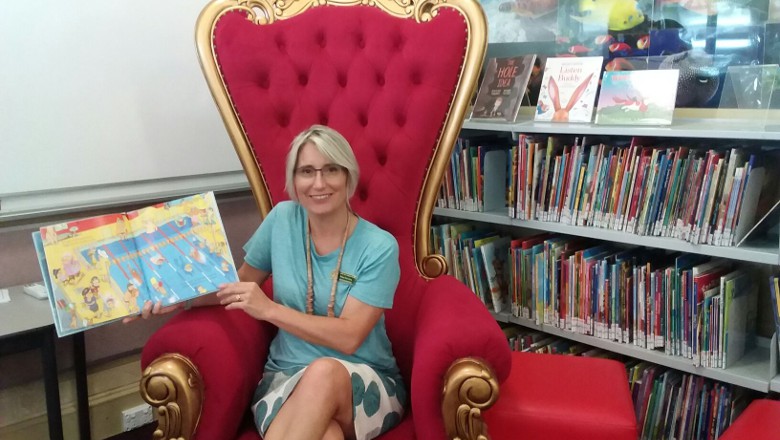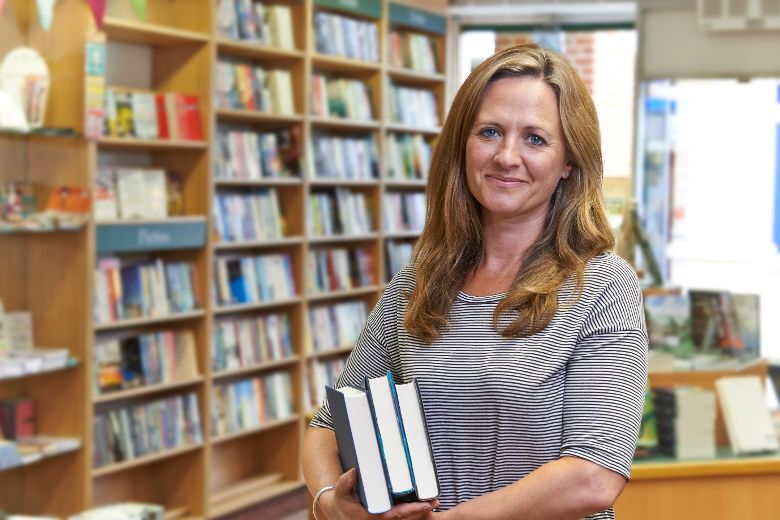
Teacher aides primarily support students' learning and development in one-on-one or small group activities. They work under the direction of the classroom teacher although some are given more responsibility.
Teacher aides work under the direction of a teacher to support students' learning and development by applying teaching and learning strategies particularly to students with learning needs, disabilities, or disorders. They also assist the classroom teacher with the monitoring and management of student behaviour as well as undertake logistical tasks to ensure the efficient operation of the classroom or centre.
You could say that teacher aides have two key roles - first, to maximise learning time by keeping students on task as much as possible, and second, to maximise how much students learn or progress during that learning time. ITAC's research-based teacher aide courses are based around these two skill areas - behaviour management and instructional skills.
To learn about what the research says about teacher aides read our literature review here.
ITAC's research-based teacher aide courses are based around these two skill areas - behaviour management and instructional skills.
If you have searched 'what do teacher aides do', then this is the article for you. Teacher aides work in the classroom environment under the supervision of the classroom teacher. They support students by implementing a range of teaching and learning strategies such as one-on-one instruction, co-operative learning, scaffolding, modelling and worked examples. They support the teacher by assisting with behaviour management as well as the general day-to-day operations or logistical needs of the classroom.
You could say that teacher aides have two key roles - first, to maximise learning time by keeping students on task as much as possible, and second, to maximise how much students learn or progress during that learning time.
Teacher aides spend most of their time supporting students in one-on-one or small group activities (in fact, research shows TAs spend more than 80% of their time in direct instructional roles). They predominantly work with students with special needs which includes students with neurological and learning disorders, physical disabilities, and behavioural disorders. Many teacher aides work in special needs schools (also called schools for specific purposes (SPS) and special schools). Approximately 30% of school staff are teacher aides according to government statistics and that number seems to be rising.
There are four key roles and responsibilities of all teacher aides in Australia:
In a typical classroom, the teacher aide will circulate from group to group or work one-on-one with a particular student (known as a 'focus' or 'target' student). He or she is not expected to teach the whole class as that is the role of the classroom teacher. They may however, occasionally teach a larger group.
In a typical classroom, the teacher aide will circulate from group to group or work one-on-one with a particular student (known as a 'focus' or 'target' student).

Teacher aides primarily support students' learning and development in one-on-one or small group activities. They work under the direction of the classroom teacher although some are given more responsibility.
While the roles and responsibilities of TAs vary, their allocated tasks largely depend on the needs of the school and the TA's capabilities. TAs who hold a certificate from a reputable training provider might end up facilitating their own small-group literacy program for example. Others are assigned a permanent student to support such as a child who has been diagnosed with autism and who is non-verbal.
Also, there are certain tasks that TAs pretty much never do. Planning lessons and sequences of learning for example, is not something that TAs learn or are expected to do. They also don't develop assessment tools, mark assessments, write reports, develop individualised plans/programs, or manage communication with families and carers.
According to the Victorian government teacher aides do the following:
To learn how to do these things, you will need to enrol in a high-quality, research-based teacher aide course. ITAC is the go-to provider for teacher aide courses in Australia. To learn more about our courses, click on a link below:
This article will now dive into the following common questions:
What types of tasks do teacher aides commonly do?
What Do Teacher Aides Do in a Typical Day?
How Do Teacher Aides Support Learning?
What Does the Research Say About Teacher Aides?
What are the different types of teacher aides in Australia.
Where can I get a job as a teacher aide?
Do teacher aides have Job Description Forms (JDFs)?
What do teacher aides do during recess and lunch?
Do teacher aides work on school holidays?
Do teacher aides do admin tasks?
What do admin assistants do?
What do library assistants do?
What do home economic assistants do?
What does 'role-stretch' mean?

Teacher aides support learning by implementing a range of teaching and learning strategies such as scaffolding, modelling and repeated reading. Pictured: ITAC student in the reading corner during her course placement. Could this be you?
A well-trained and qualified teacher aide will implement a range of teaching and learning strategies such as those listed below. It should be noted that these are examples of the types of teaching strategies that ITAC teach in the CHC30221 Certificate III in School Based Education Support and the CHC40221 Certificate IV in School Based Education Support. Many providers do not teach these strategies which is unfortunate as teachers use many of them on a daily basis (and TAs need to know them in order to assist):
Instructional skills |
|||
| 1 | Explicit instruction | 21 | Rapport building |
| 2 | Metacognitive skills | 22 | Bloom’s taxonomy |
| 3 | Questioning techniques | 23 | The Zone of Proximal D. |
| 4 | Feedback techniques | 24 | Cognitive load theory |
| 5 | Formative assessment | 25 | Coping strategies |
| 6 | Worked examples | 26 | Graphic organisers |
| 7 | Think alouds | 27 | Play-based learning |
| 8 | Modelling | 28 | Phonics and whole word |
| 9 | Scaffolding | 29 | Active reading |
| 10 | Chunking | 30 | Repeated reading |
| 11 | Guided/shared learning | 31 | Re-reading |
| 12 | Reflective practice | 32 | Self-questioning |
| 13 | Intervention strategies | 33 | Writing to learn |
| 14 | Technology learning | 34 | Critical literacy |
| 15 | Systematic prompting | 35 | Language strategies |
| 16 | Mastery learning | 36 | Social stories |
| 17 | One-on-one instruction | 37 | Pair and group work |
| 18 | Motivational strategies | 38 | Teaching to learn |
| 19 | Cooperative learning | 39 | Number sense |
| 20 | Goal setting | 40 | Mental scripting |
There is a lot of variation in what TAs do, so it's challenging to pin down an accurate answer that applies across the board. In a typical day a teacher aide will spend most of their time working one-on-one with students who need additional support.
This may mean working with a single student for most of the day, or it may mean circulating from student to student, or group to group. Teacher aides may also develop resources and undertake logistical and operational tasks such as cleaning, setting up and storing equipment.
A ‘typical’ day may involve some of the following tasks:
Note: for a detailed look at the research on teacher aides read our literature review here.
Before we go any further, let's quickly look at what several studies have said about the roles and responsibilities of teacher aides:
A study in 2015, in Queensland Australia, found that teacher aides spend most of their time supporting students one-on-one or in small groups, and they also complete a limited amount of non-instructional work.
A New Zealand study concluded that they (TAs) play a pivotal role in providing support for students with disabilities in a classroom setting and ensure educational presence, participation and achievement.
A 2015 study published in The Australian Association for Research in Education, stated that teacher aides work ‘with students one on one or in small groups to try to improve their academic outcomes, especially in the core subjects like reading and mathematics.’
A 2018 study conducted in the ACT, stated that teacher aides are primarily used to support students with disabilities:
“TAs are now employed to provide learning support in classrooms to enable students with disability and learning difficulties to access learning in mainstream schools…students with disability and learning difficulties are defined as students who receive additional resources to enable them to access classroom support, usually provided by a teacher aide.”
A study from 2011 explained that “TAs have inadvertently become the ‘primary mechanism’ enabling students with disability and learning difficulties to attend mainstream schools…”
Howard and Ford (2007) found that teacher aides engaged in complex tasks including planning, producing and adapting materials for students with additional needs.
There are a few different types of teacher aides in Australia such as those in the table below. Each will undertake different roles and have slightly different responsibilities.
TYPE |
COMMON TITLE |
MAIN TASK |
Teacher aide |
Depends on the state (Education Assistant or EA in WA, SSO in SA etc.) |
The general all-rounder, often employed to assist a student with special needs but will circulate around the room depending on need. |
Special needs assistant |
Special needs EA, special needs teacher assistant, LSO in NSW, integration aide in Victoria. |
Works in an inclusive or mainstream class with one or more students with a disability, or in a special needs school. |
AIEO |
Aboriginal & Indigenous Education Officer (WA) |
Works mainly with Indigenous students. Also known by various titles depending on jurisdiction e.g. Aboriginal and Islander Education Worker. |
Home economics |
Home economics assistant |
Works in the home economics (kitchen) helping students and teachers with cooking lessons, stock-take etc. |
Given the diversity of activities that TAs support, a normal day for a teacher aide will vary from school to school. If you ask 2 teacher aides 'what do teacher aides do?' you will probably get 2 very different answers. A typical day might look like the following:
TIME |
ACTIVITY |
TASK |
| 830 | Students arrive | Greet students and parents, prep for day. |
| 845 | News | Assist the teacher to set up the first activity:
|
| 900 | Spelling | Assist students with weekly spelling words:
|
| 945 | Writing | Assist students with literacy activities:
|
| 1030 | Recess | Recess duty (weekly roster). Supervise students:
|
| 1050 | Numeracy | Assist students with numeracy activities directed by the teacher:
|
| 1150 | Sport | Assist the sports teacher with:
|
| 1240 | Lunch | Duty – supervising an area with a teacher. |
| 130 | Art | Assists the art teacher with art lesson including:
|
| 230 | Home Time | Assist with end-of-day tasks (cleaning, organising, preparing for the next day etc.). Often required to remain at school until a certain time e.g. until 3.00. |
In the past teacher aides were largely employed to support the teacher almost like a personal assistant. When teacher aides were first employed in the 60s and 70s, they were mainly used to reduce the teacher's workload and did most of the mundane non-instructional tasks such as filing records (there were no computers back then obviously). Teachers did all the face-to-face teaching without much help from the TA - in fact, they rarely entered the classroom. If you ask many older people 'what do teacher aides do?' they may remember TAs in this way.
In those days, teachers spent almost all of their class time lecturing from the front of the room, and special needs students were rarely allowed to attend a mainstream class. When students with additional needs were 'allowed' to attend mainstream classes, teachers needed extra help - they simply didn't have the time to support and teach existing students as well as students who needed additional support due to their disability or disorder. At this point, TAs started to enter the classroom as governments were pressured by the community to provide support services for children with additional needs - and the rest is history.
Nowadays, TAs do some admin work still but it isn't their primary purpose. In fact, everyone in a school had to do admin work at some point including even the Principal (who spends almost all day doing admin work). So yes, teacher aides are expected to do basic admin tasks from time to time such as photocopying and light cleaning - even teachers do these tasks. A small number of TAs believe that these tasks are beneath them or that it is somehow demeaning, however this line of thinking is misguided - even the Prime Minister of Australia does admin tasks! A big factor that determines what a teacher aide will do from one day to the next is what the classroom teacher need them to do - and sometimes this means admin tasks.
Important note: ALL school staff do admin work of some type – even the gardener! Part of the TA's role is to assist the teacher to maximise learning - an easy way to achieve that is to free the teacher up so they can do as much teaching as possible. After all, the teacher is the most skilled and trained person in the room in terms of instruction (pedagogy), so logically the more the TA can free the teacher up for instruction, the better particularly for students.
Education in Australia is compulsory until a certain age depending on the state. Some states require attendance until at least the year in which the child turns 17 (through formal schooling or a combination of training and employment). Compulsory school education in Australia generally begins with preschool. Students then enrol in primary school (grade k-6), followed by secondary school (or high school, grade 7-10) and senior secondary school (or college, grade 11 and 12). There are various versions of this system in each state, territory or region.
Schools in Australia are either government or non-government. Non-government schools include private schools, faith-based schools and alternative schools such as Montessori. All schools in Australia are predominantly publicly funded by the federal government - including private schools.
The details below may differ depending on your location. Information has been generalised in many cases.
Kindergarten
Often shortened to Kindy and generally undertaken around the age of 4 for 12 months. Kindergarten is not compulsory however it is very common for parents to enrol their children in kindy when they are old enough. Kindy programs are not always operated by schools and many childcare services offer kindy programs. The purpose of kindy is to:
Pre-primary
Pre-primary is the first year of formal schooling and starts at around 5 years of age. Pre-primary is full time and is compulsory in some states such as Western Australia. You can think of pre-primary as half-way between kindy and primary school. Pre-primary is operated and delivered by early childhood teachers employed by a primary school.
Primary school
Primary school begins after pre-primary and runs from year 1 until year 6 or 7. This is the first stage of compulsory schooling in Australia.
High School
High school, also known as secondary school or college, covers the years 7-12.
Special needs
Students with learning difficulties or disabilities have an equal opportunity to an education under law. Generally speaking, parents can choose:
Teacher aides are not required to work on school holidays. Holidays are generally for 2 weeks at the end of term 1, 2 and 3, and for approximately 6 weeks over summer (known as the Christmas break). Some states may use a three term system - in which case summer holidays are a little longer. The simple answer to the question 'what do teacher aides do during holidays' is nothing - nothing related to school anyway. They may create a few resources but generally speaking there is no requirement for teacher aides to do anything on the holidays.
While not required, many teacher aides choose to do a few tasks over the break such as preparing resources and attending PDs (professional development).
You can learn more about teacher aide pay, allowances, and benefits by reading this article: How much do teacher aides get paid?

Some teacher aides do what is known as ‘duty’ – some do not. To do duty is to supervise an area of the school for a certain period of time e.g. recess, lunch or while students wait for the bus after school. Duty is a rostered system and is undertaken in pairs in specific areas of the school.
For example, you may be rostered for recess duty on Monday and bus duty on Friday. In some states, TAs can do duty on their own, in some they can't, and in some they have to be with a teacher. Most of the time, TAs don't do duty other than to look after a student with special needs (which they do from a distance so they (the student) can spend time with friends).
If you have recently applied for a teacher aide position or are lucky enough to already be employed in a school, and you want to know what you are expected to do, the best place to start is by checking your JDF or Job Description Form. For example, if you are employed as a home economics assistant, the JDF will include tasks such as those below:
You can read more about the roles and responsibilities of teacher aides by going to the department of education in your state or territory such here for Queensland, here for NSW, and here for WA.

Teacher aides can be expected to take on many roles such as library assistants.
One of the biggest issues with teacher aides is the issue of role stretch. This has been studied by academics and is a well-known problem. Role stretch means that the position is very loosely defined and the person is asked to do more and more over time – the list of tasks and responsibilities keeps growing or stretching.
One reason for this is because teacher aides can be deployed by schools to solve problems. For example, a TA might be put in a class simply because the teacher is struggling to control the behaviour of a group of students (what is unofficially known as a 'weak teacher'). What does this mean? Teacher aides need to be flexible, adaptable, and open to challenges and regular change.

Home economics assistants can work with students, but they mainly do a lot of logistical tasks such as buying food and stock-take.
Home economics assistants support home economics teachers in a range of tasks mainly related to home economics subjects such as Food Technology, which is a compulsory elective in most year 7-10 grades. As a Home Economics Assistant, you may be required to:
Teacher aides can sometimes be employed in schools as library assistants. Library assistants support school teachers and librarians with a range of tasks such as managing library services, assisting students with research, locating books and magazines, ensuring texts are returned and stored, purchasing new texts, managing bookings, light cleaning and general administration and support duties. Library assistants complete a range of tasks including:
All schools employ a number of admin staff and TAs sometimes spend part of their week in an admin role. Depending on the role, admin staff undertake the following tasks:
What do teacher aides do? Teacher aides are expected to take on a range of tasks depending on the needs of the school. Many teacher aides work with students with disabilities and disorders. Some work in home economics while others work in the library or even take on admin roles for part of their week. Some TAs even run their own programs under the direction of a teacher or other specialist. Regardless of where you end up working or what you end up doing, all teacher aides implement teaching strategies such as one-on-one instruction, explicit teaching, and formative assessment. Behaviour management and general classroom support are also key responsibilities of all teacher aides in Australia.